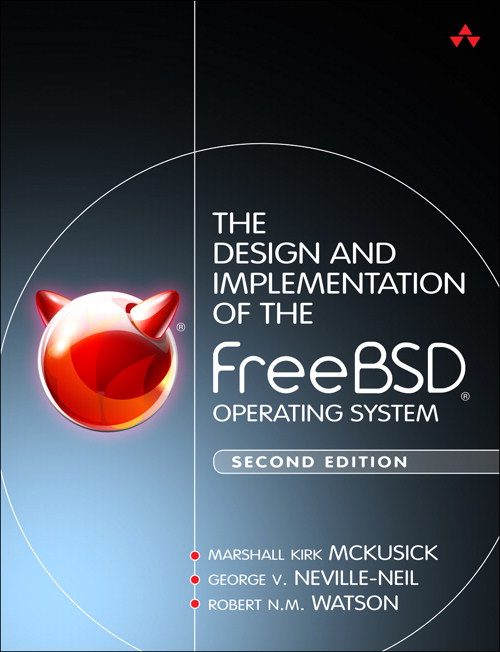
Now available: The Design and Implementation of the FreeBSD Operating System (Second Edition)
[ source navigation ] [ diff markup ] [ identifier search ] [ freetext search ] [ file search ] [ list types ] [ track identifier ]
FreeBSD/Linux Kernel Cross Reference
sys/Documentation/tracepoints.txt
Version:
- FREEBSD - FREEBSD-13-STABLE - FREEBSD-13-0 - FREEBSD-12-STABLE - FREEBSD-12-0 - FREEBSD-11-STABLE - FREEBSD-11-0 - FREEBSD-10-STABLE - FREEBSD-10-0 - FREEBSD-9-STABLE - FREEBSD-9-0 - FREEBSD-8-STABLE - FREEBSD-8-0 - FREEBSD-7-STABLE - FREEBSD-7-0 - FREEBSD-6-STABLE - FREEBSD-6-0 - FREEBSD-5-STABLE - FREEBSD-5-0 - FREEBSD-4-STABLE - FREEBSD-3-STABLE - FREEBSD22 - l41 - OPENBSD - linux-2.6 - MK84 - PLAN9 - xnu-8792
SearchContext: - none - 3 - 10
SearchContext: - none - 3 - 10
1 Using the Linux Kernel Tracepoints 2 3 Mathieu Desnoyers 4 5 6 This document introduces Linux Kernel Tracepoints and their use. It provides 7 examples of how to insert tracepoints in the kernel and connect probe functions 8 to them and provides some examples of probe functions. 9 10 11 * Purpose of tracepoints 12 13 A tracepoint placed in code provides a hook to call a function (probe) that you 14 can provide at runtime. A tracepoint can be "on" (a probe is connected to it) or 15 "off" (no probe is attached). When a tracepoint is "off" it has no effect, 16 except for adding a tiny time penalty (checking a condition for a branch) and 17 space penalty (adding a few bytes for the function call at the end of the 18 instrumented function and adds a data structure in a separate section). When a 19 tracepoint is "on", the function you provide is called each time the tracepoint 20 is executed, in the execution context of the caller. When the function provided 21 ends its execution, it returns to the caller (continuing from the tracepoint 22 site). 23 24 You can put tracepoints at important locations in the code. They are 25 lightweight hooks that can pass an arbitrary number of parameters, 26 which prototypes are described in a tracepoint declaration placed in a header 27 file. 28 29 They can be used for tracing and performance accounting. 30 31 32 * Usage 33 34 Two elements are required for tracepoints : 35 36 - A tracepoint definition, placed in a header file. 37 - The tracepoint statement, in C code. 38 39 In order to use tracepoints, you should include linux/tracepoint.h. 40 41 In include/trace/subsys.h : 42 43 #include <linux/tracepoint.h> 44 45 DEFINE_TRACE(subsys_eventname, 46 TPPTOTO(int firstarg, struct task_struct *p), 47 TPARGS(firstarg, p)); 48 49 In subsys/file.c (where the tracing statement must be added) : 50 51 #include <trace/subsys.h> 52 53 void somefct(void) 54 { 55 ... 56 trace_subsys_eventname(arg, task); 57 ... 58 } 59 60 Where : 61 - subsys_eventname is an identifier unique to your event 62 - subsys is the name of your subsystem. 63 - eventname is the name of the event to trace. 64 - TPPTOTO(int firstarg, struct task_struct *p) is the prototype of the function 65 called by this tracepoint. 66 - TPARGS(firstarg, p) are the parameters names, same as found in the prototype. 67 68 Connecting a function (probe) to a tracepoint is done by providing a probe 69 (function to call) for the specific tracepoint through 70 register_trace_subsys_eventname(). Removing a probe is done through 71 unregister_trace_subsys_eventname(); it will remove the probe sure there is no 72 caller left using the probe when it returns. Probe removal is preempt-safe 73 because preemption is disabled around the probe call. See the "Probe example" 74 section below for a sample probe module. 75 76 The tracepoint mechanism supports inserting multiple instances of the same 77 tracepoint, but a single definition must be made of a given tracepoint name over 78 all the kernel to make sure no type conflict will occur. Name mangling of the 79 tracepoints is done using the prototypes to make sure typing is correct. 80 Verification of probe type correctness is done at the registration site by the 81 compiler. Tracepoints can be put in inline functions, inlined static functions, 82 and unrolled loops as well as regular functions. 83 84 The naming scheme "subsys_event" is suggested here as a convention intended 85 to limit collisions. Tracepoint names are global to the kernel: they are 86 considered as being the same whether they are in the core kernel image or in 87 modules. 88 89 90 * Probe / tracepoint example 91 92 See the example provided in samples/tracepoints/src 93 94 Compile them with your kernel. 95 96 Run, as root : 97 modprobe tracepoint-example (insmod order is not important) 98 modprobe tracepoint-probe-example 99 cat /proc/tracepoint-example (returns an expected error) 100 rmmod tracepoint-example tracepoint-probe-example 101 dmesg
Cache object: be517b884b2787966c9b875f87c769bc
[ source navigation ] [ diff markup ] [ identifier search ] [ freetext search ] [ file search ] [ list types ] [ track identifier ]